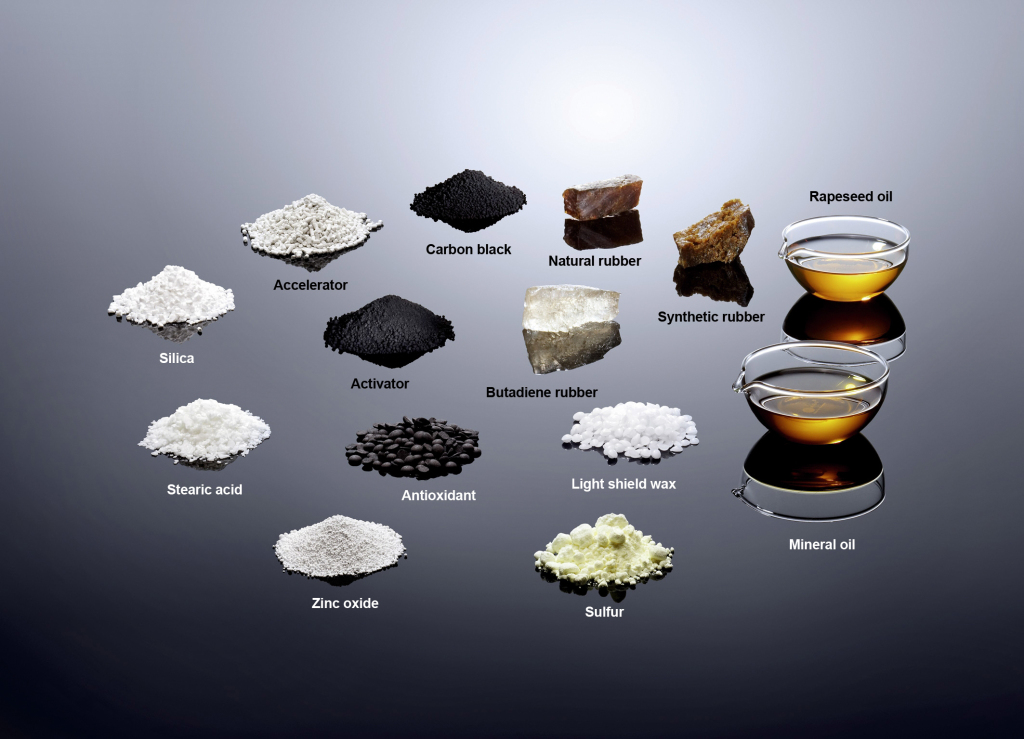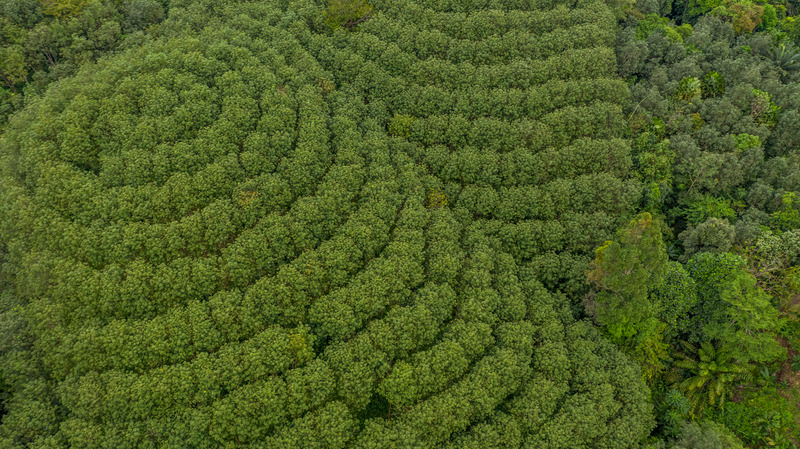Tyres may not be glamorous but they are in fact a high tech composite, in many cases deploying cutting edge materials technology at an industrial scale. Multiple carefully optimised rubber compounds are deployed in each tyre. These are combined with high quality steel and textile reinforcements to give the tyre its carefully balanced overall performance. Tyres are cured in a mould but they are far from being an injection moulding. You can watch the manufacturing process here.
The principal constituents of car tyres are typically:
Elastomers 42%,
Carbon black & silica 28%,
Steel 12%,
Oils 6%,
Textile 5%,
Zinc oxide 1%,
Sulphur 1%,
Other ingredients 5%

Focus on natural rubber
Tyre manufacture accounts for 70% of the world production of natural rubber. Industry players have developed alternative plant-based sources of natural rubber to relieve pressure on supplies from rainforest plantations of the hevea tree as global demand for tyres increases.
Truck tyres contain typically 30% natural rubber, car tyres about 15%. Intensive research over many decades has not been able to identify an alternative synthetic material for heavy load-bearing tyres. A truck tyre typically requires 20 – 25kg of natural rubber which will need 200 – 250 m2 of cultivated land to produce.
The EU has listed natural rubber as a Critical Raw Material. This reflects the combination of high importance to the economy and high risk associated with supply.
Global natural rubber consumption is expected to rise from 12.5 million tonnes in 2016 to 17 million tonnes by 2025 largely driven by escalating demand from tyre makers in emerging market countries.
In order to address the multiple challenges facing the natural rubber supply chain, tyre manufacturers joined other stakeholders in 2018 to create the Global Platform for Sustainable Natural Rubber. The GPSNR is working to harmonize standards to improve respect for human rights, prevent land-grabbing and deforestation, protect biodiversity and water resources, improve yields, and increase supply chain transparency and traceability.
Maximising resource efficiency through longer tyre life and increased use of retreaded truck tyres would also help to alleviate the threatened supply shortfall.

